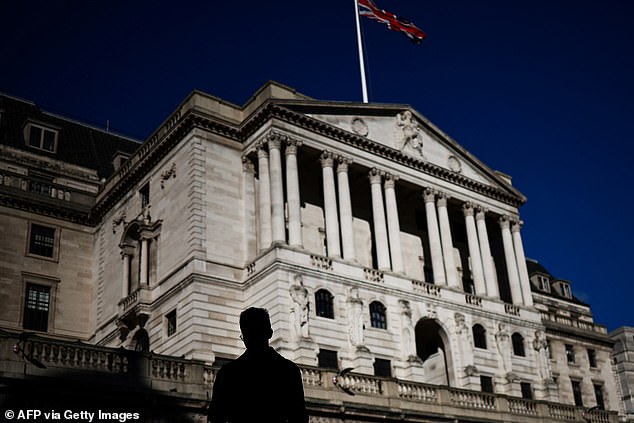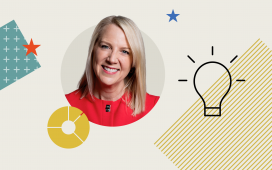That was a close shave. Inflation stayed steady in January at 4 per cent rather than rising to 4.2 per cent, which is what most economists had forecast and the rest of us feared.
While it’s only the tiniest of differences, even the smallest uptick in consumer prices would have had a disproportionate impact on whether the Bank of England goes ahead with its first expected interest rate cut sooner rather than later.
Indeed, the better-than-expected inflation numbers, which were also lower than pay growth, brought good news all round, especially for teetotal lounge lizards who like to comfort eat.
Food and non-alcoholic drink prices fell at a monthly rate of 0.4 per cent in January, the first such fall for two years, helped by price cuts for bread and cereals, cream crackers, sponge cake and chocolate biscuits.
And furniture prices fell at their fastest monthly rate for four years, with big cuts to the cost of kitchens, dining tables and chairs and leather settees. Time to start doing that DIY.

Relief: Inflation stayed steady in January at 4% rather than rising to 4.2%, raising hopes that the Bank of England (pictured) will be confident enough to cut rates at its May meeting
It was these lower prices which more than offset the rise in gas and electricity costs after the Ofgem energy price cap rose last month.
Core inflation, which excludes energy and food, also held steady at 5.1 per cent in January as did CPIH, the measure of inflation that includes owner-occupiers’ housing costs.
Even better news was that the retail prices index, the rate often used by trade unions in pay negotiations, actually fell to 4.9 per cent in the year to January, down from 5.2 per cent the month before.
If you are of the glass half-full type like me, then it’s now almost a racing certainty that the Bank will be confident enough to cut rates at its May meeting.
Unless there are any big external shocks, the trajectory is definitely downwards so there’s no question that the Bank should start trimming.
If in doubt, the Bank’s Monetary Policy Committee members should listen to their former economist, Andy Haldane, who said in an interview this week that he would have cut rates by now, probably at the end of last year given the UK’s slow rate of growth and progress in taming inflation.
More pertinently, Haldane added that, as inflation will be within spitting distance of its 2 per cent target by spring, the greater danger now is that the Bank will be too slow to cut rates – just as it was too slow in lifting rates when inflation roared ahead.
Haldane is not speaking with the benefit of hindsight: he warned back in June 2021 that inflation was rearing its ugly head and that rates should be raised.
As he points out, the job of monetary policy is to look ahead to where inflation will be. He was right then and is right now.
Romantasy hit
Sarah J Maas is 37, very pretty, married with two children, and has sold more than 38 m books which have been translated into 37 languages.
What more could a girl want? Another best-seller.
And she’s got it: her latest novel published last month is the number one in the US, the UK and Australia.
House of Flame and Shadow is the third in her series of what’s called ‘romantasy’ fiction and follows the story of Bryce Quinlan, a half human, half fairy-type figure in Crescent City.
It’s also the third-fastest-selling fantasy novel since records began, with 44,761 copies sold in the first week.
Oh, and the multiverse Maas is also a star on TikTok and Instagram, with the #ACOTAR hashtag chalking up 8.5 bn views.
At the midnight parties for the release of her latest novel in Manhattan, the Valentino-dressed writer was mobbed like a rock star with fans queueing down the street.
Bloomsbury puts it more modestly: Maas is a publishing phenomenon.
She’s also been phenomenally lucky for Bloomsbury, which has published all her previous 15 books in English and has a contract for another six titles.
Like the Harry Potter effect, the Maas effect – along with chunky sales of air fryer cookbooks – means that Bloomsbury is going to beat profit and sales forecasts. By a big margin.
Anyone who invested early on in Bloomsbury is looking pretty good too.
The shares shot up 5.4 per cent on the update to a record high. Investors who spotted that the lockdown would lead to us all reading more books will have seen shares more than double since the summer of 2020.
Are they still worth a buy? Who knows?
But Bloomsbury is one of those few pandemic winners which keeps on winning.
Some links in this article may be affiliate links. If you click on them we may earn a small commission. That helps us fund This Is Money, and keep it free to use. We do not write articles to promote products. We do not allow any commercial relationship to affect our editorial independence.










